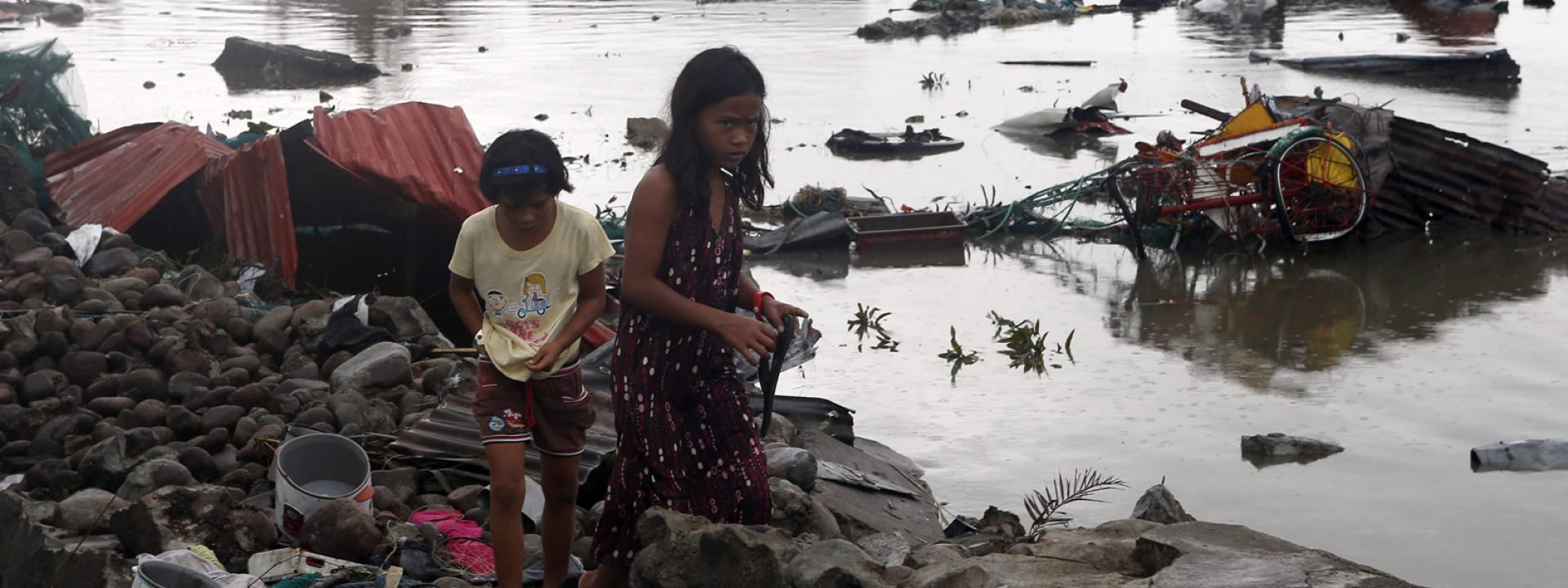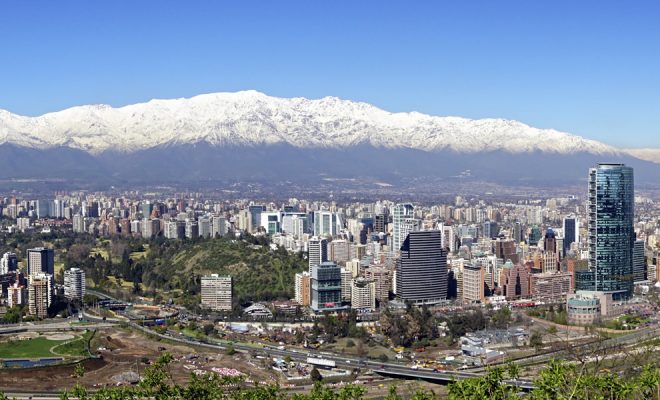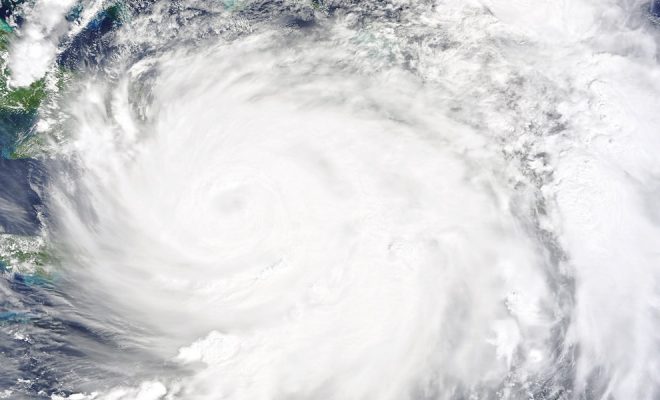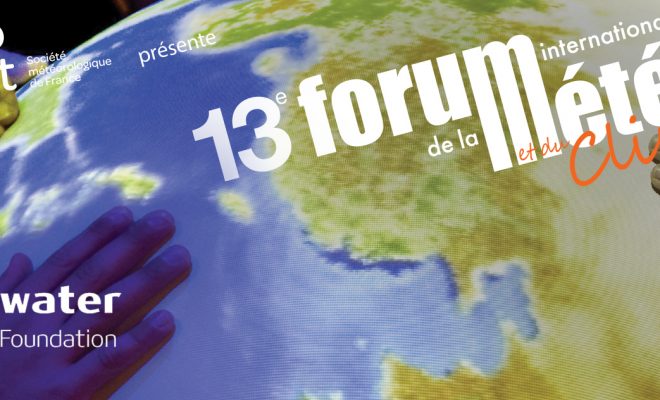On the 8th November 2013, at 4.30 am, the super typhoon Haiyan burst into the Visayas of the Philippines with winds reaching 235 km per hour, wiping out these islands and the majority of the central area of the country. Meteorologists were impressed: in terms of the drop of atmospheric pressure, it was the most intense cyclone registered on dry land and the one to generate the highest sustained wind speed in one minute in history. The devastation caused by Haiyan made it necessary to rethink the risk, vulnerability and resilience factors that are essential to prevent and palliate meteorological disasters and that allow the recovery of affected areas, where the first thing to be recovered is the access to water and to sanitation.
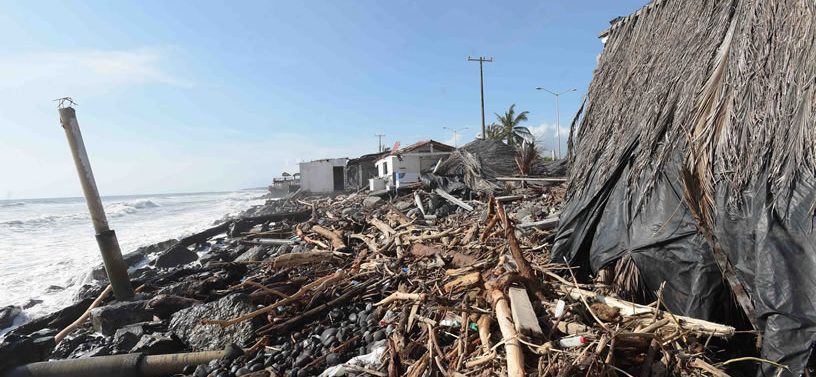
Coastal damage caused by Hurricane Patricia in Colima, Mexico.
© P. R. Mexicana
Climate change: less but more violent cyclones
Two years later, in October 2015, Hurricane Patricia broke the sustained speed record held by Haiyan on the Mexican shore, being registered at the National Hurricane Center (NHC) as the most intense hurricane ever registered in the Western hemisphere. Both phenomena were shown at the Intergovernmental Panel on Climate Change (IPCC) as a clear consequence of climate change and as a confirmation of the predictions included in its Fifth Evaluation Report (AR5), which was the base of the work of the COP 21, in December 2015 in Paris.
According to the forecasting models, the percentage of violent cyclones will increase by 2%-11% globally in the next four decades. However, the same forecasts indicate that although they will more intense they will happen less often.
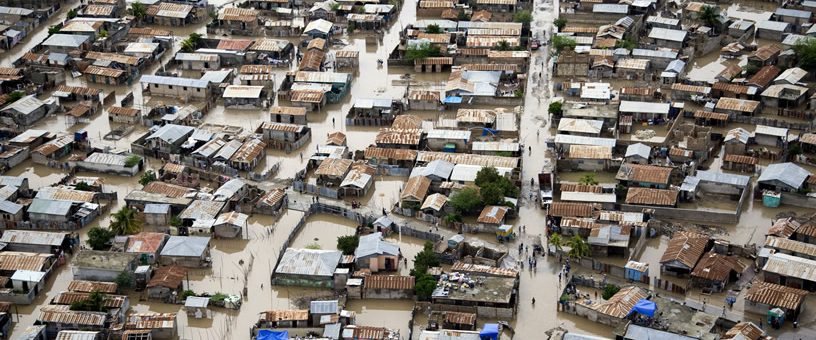
Streets and pathways are flooded after the passing of Hurricane Tomas in Gonaives, north of Port-au-Prince, Haiti.
© UNICEF/Marco Dormino
Phenomena and disasters
The United Nations Office for Disaster Risk Reduction (UNISDR) differentiates between disasters and the phenomena that cause them. For the UNISDR the term “natural disaster” can be misunderstood, as disasters are the result of the lack of prevention and planning in the presence of natural phenomena. Phenomena are natural, but the disasters are produced by human action in his environment. For instance, the flooding of a flood plain caused by an overflowing river is a natural phenomenon; the presence of human settlements in the area creates the possibility of a disaster.
There are two different types of natural phenomena that cause disasters: the geological ones and those caused by climate. Earthquakes, tidal waves, and volcanic eruptions are among the first ones; all the extreme meteorological phenomena (hurricanes, tornados and storms), droughts and the rising of the sea level due to the melting of polar ice would be examples of the second category. A mixed origin between geological and climatic can be found in some avalanches, which combine excessive melting and landslides. According to the World Bank, disasters caused by climate phenomena have caused two thirds of the global economic and human losses in the last 44 years and have provoked 3.5 million deaths all around the world.
Exposure, vulnerability and risk
Although especially violent phenomena often exceed the forecasting capability, human errors in the planning of human settlements are often the main cause of disasters, especially those caused by extreme meteorological phenomena. As explained by the architect Eric Cesal, Special Projects Director of the Curry Stone Foundation and specialist in disasters, “there are two increasing megaphenomena in the world: climate change and urbanization. Once both coincide, there is a possibility and inevitability of greater and more severe disasters occurring.”
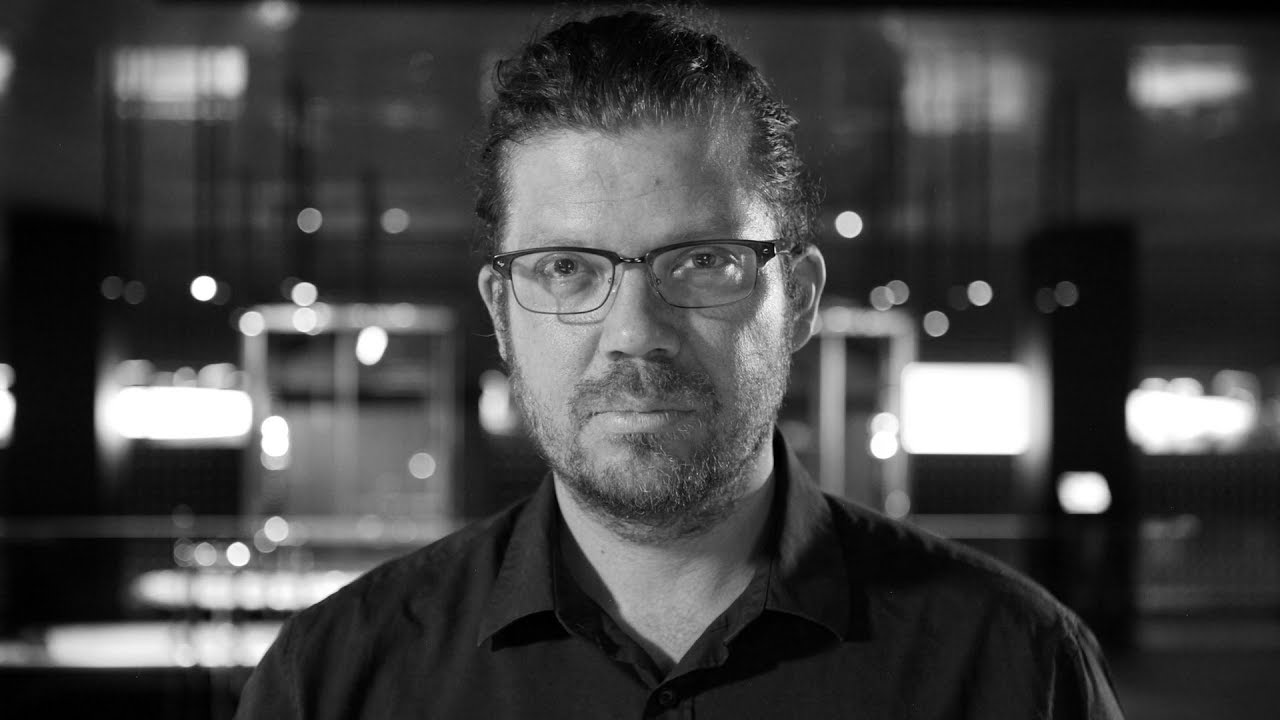
There are key factors to understand and manage a situation with which we will have to coexist in the world, and which are the base of the success of any prevention strategy in the most affected countries.
The first ones are the concepts of exposure and vulnerability in face of the danger of a phenomenon that end up shaping the risk factor. In many cases exposure and vulnerability are erroneously considered as synonyms. Both factors are anthropogenic, that is, caused by man, but with a very different meaning.
Exposure can be defined as the presence of people, homes, buildings, service facilities or any economic, social or cultural good in areas where violent phenomena might occur. Vulnerability is the inclination to all of it being damaged. For instance, a house in the Philippines is exposed to a typhoon, but it is vulnerable because it has been deficiently built. In fact, the Philippines is the second most exposed country to the dangers of violent meteorology, with an average of 22 annual typhoons.
As it is easy to understand, vulnerability has a direct relationship with poverty: the deficient water and sanitation facilities, the shanties and the overcrowding in shacks are factors that increase the vulnerability to phenomena.
The disaster risk combines exposure and vulnerability. The IPCC defines it as the probability of a community suffering severe alterations in its normal operation and human, economic and environmental damages caused by dangerous physical events that occur in vulnerable social conditions. To continue with the Filipino example, due to its location, physical geography and poverty levels, the archipelago is a high risk area of meteorological disasters.
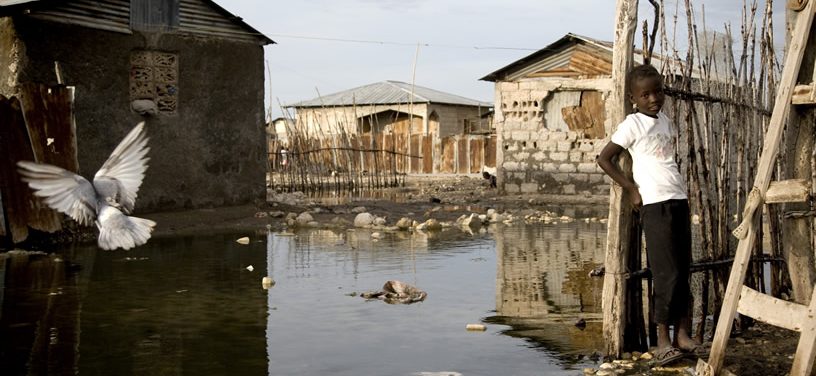
A girl stands surrounded by water in Raboto, a slum area of Gonaives, in the Artibonite Region of Haiti. Hurricane Tomas heavily hit the town, flooding streets and houses and retarding the response to an outbreak of cholera that has spread across the country.
©UNICEF/Marco Dormino
Water and sanitation, the major lines of resilience
These damages require the immediate emergency response to meet critical human needs. From the start, this aid needs to be conceived to develop immediate recovery plans and to achieve the resilience of the affected community. In all cases the access to water and the restoration of the sanitation is the main starting point.
In the projects of the We Are Water Foundation we can see examples of these procedures. After Typhoon Haiyan, one of the emergency aid actions consisted of something as simple as the distribution of canisters (and purification tablets) to collect water and to purify it; in the recovery aid the restoration of the access and sanitation systems was essential to prevent the population from getting contaminated water. After the earthquake that devastated Nepal, the distribution of canisters was also a priority to provide families with 4 liters per person and day, the minimum quantity required to drink and cook, as well as the shipping of material to rebuild the sanitation facilities.
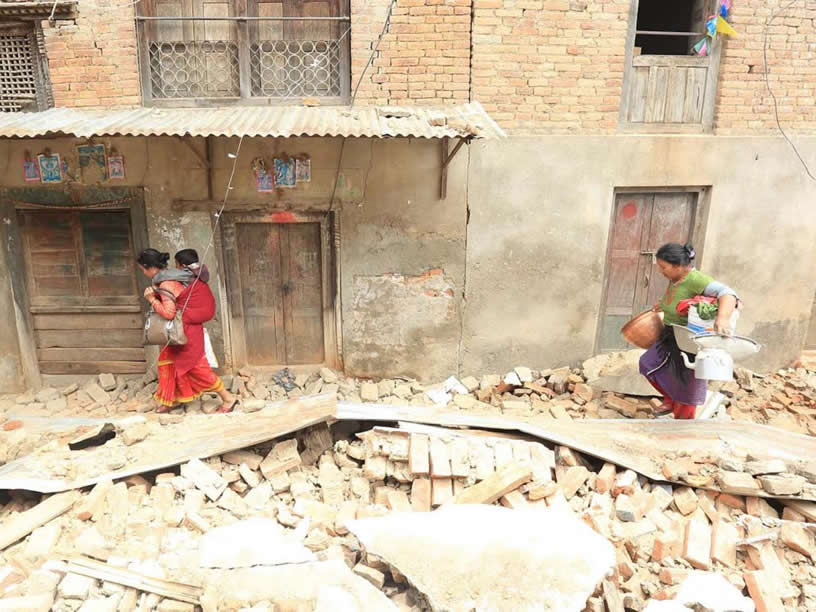
©OXFAM
Prevention provides benefits
A quick response to emergencies is vital, but it is essential to invest in prevention. In the last 44 years, disasters caused by climate conditions have provoked 3.5 million deaths, costing more than 2 trillion dollars. In 2016, the most costly disasters caused by meteorology occurred in Asia and America: the flooding that affected China in the middle of the year was responsible for 20 billion dollars´ worth of damages; and Hurricane Matthew resulted in $10 billion worth of damage, according to the reinsuring company Munich RE.
A study by United Nations for Latin America reveals that each dollar invested in the reduction of disaster risks results in savings of 9.5 dollars, as the recurrent losses due to violent meteorological phenomena are eliminated. In a similar way, the European Union calculates that each euro spent in the protection against flooding in Europe results in savings of 6 euros. Prevention saves lives and is profitable. But in order to prevent it is necessary to raise awareness in society of the dangers, providing the population with action protocols, planning facilities and the settlements in exposed areas and investing in scientific research of prediction and warning technologies. The future of climate compels us to be alert.


